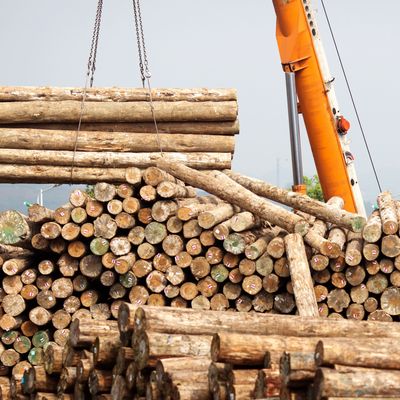Roundwood Trade

Roundwood is produced from the stem of the tree by delimbing and cross-cutting to the desired specification (typically top-diameter and length). The term can be used to describe small dimension low value products (e.g. pulpwood, chip wood), and larger dimension or higher value products (e.g. sawlogs and veneer logs). Value depends on the quality, specification, market and logistics.
Typically, roundwood is traded and transported over short distances by road haulage, with processing facilities often located within 40-50 miles of harvesting sites – this trend is fairly consistent on a global level, especially for lower value products like pulpwood. Longer distance and international trade in roundwood, often by sea freight or rail, tends to be limited to higher value sawlogs. Although there is also a substantial trade in pulpwood logs where the market demand can meet the logistical costs.
The scale of the industrial roundwood import and export trade has averaged around 125 million cubic metres p.a. (2019-23).
Industrial Roundwood - Import & Export
Industrial Roundwood - Top 20 Importing Countries (2019-23)
Industrial Roundwood - Top 20 Importing Countries (2019-23)
Industrial Roundwood - Top 20 Importing Countries (2019-23)

China imports the largest quantity of industrial roundwood with an average of 41% of total import market over this period. Much of the remaining trade is intra-European.
Industrial Roundwood - Top 20 Exporting Countries (2019-23)
Industrial Roundwood - Top 20 Importing Countries (2019-23)
Industrial Roundwood - Top 20 Importing Countries (2019-23)

New Zealand has been the largest exporter of industrial roundwood with an average of 18% of total exports. Note: this product category includes both coniferous and non-coniferous species, pulpwood and sawlogs.
Contact us to discuss your specific needs and requirements.
We can offer high level analysis at global, regional or national level. We can also offer local level investigation, analysis, evaluation and review.